Research
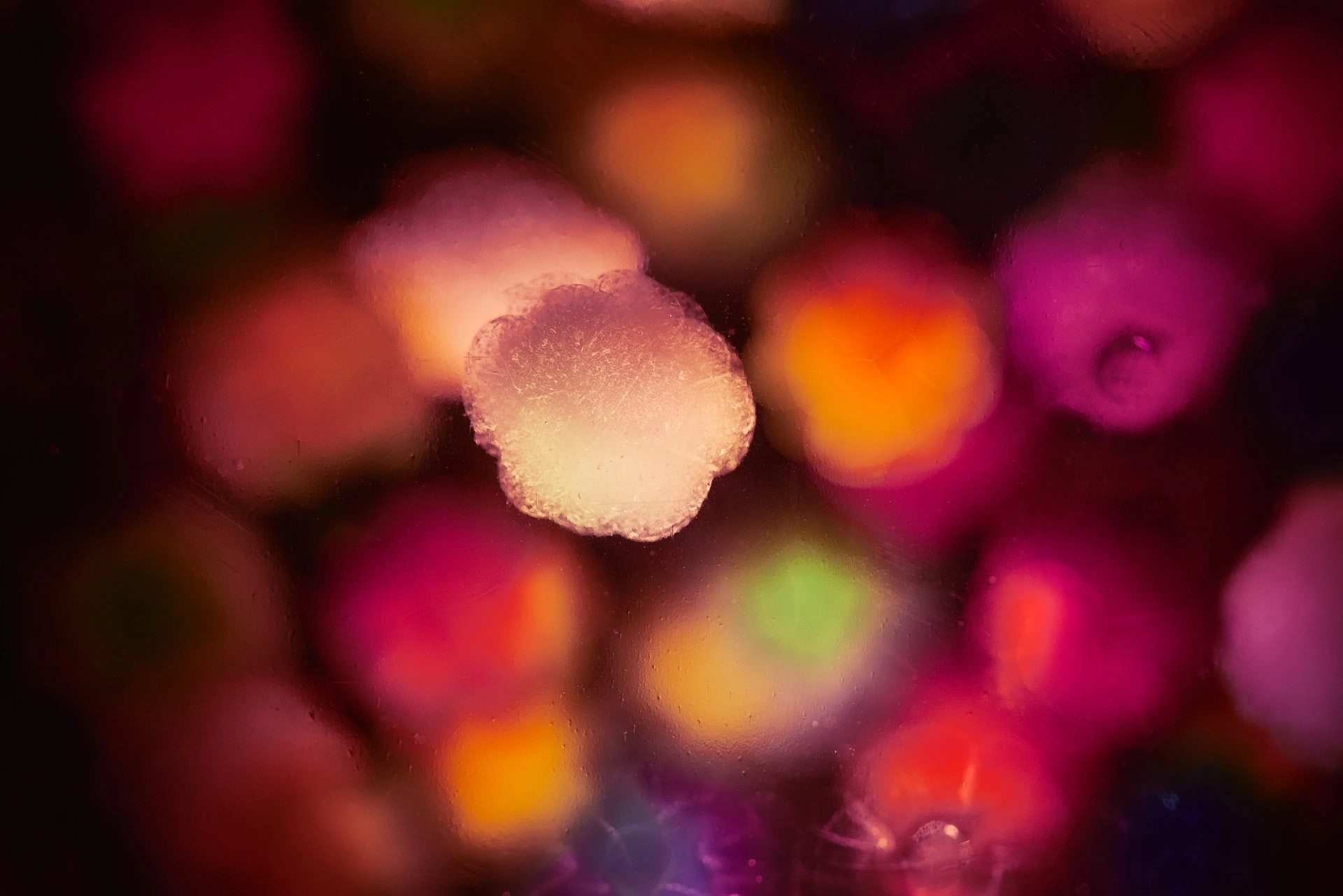
Potential Research Projects
Hierarchical Porous Materials for Phosphate and Nitrate Removal
Porous materials with large surface area, high pore volume, and tunable chemical functionality have great scientific and industrial applications due to their adsorptive properties. Hierarchical porous materials have well-controlled multimodal porosities over different length scales ranging from micro, meso, to macro pores. This project aims to develop a methodology to synthesize hierarchical porous materials with tunable properties such as pore morphology and chemical functionality. Further, these materials will be used for the removal of phosphates and nitrates from water. Kinetic and isotherm modeling will help to investigate the adsorption mechanism of the new materials.
Multifunctional Thin Film Nanocomposite (TFN) Membranes
To secure adequate water resources of desired quality is one of the grand technological challenges. Basic polymer-based membranes are widely used for water treatment due to ease of pore formation, higher flexibility, and facile installation. Thin film nanocomposite (TFN) membrane is a unique type of membranes, typically fabricated via interfacial polymerization (IP) method. Nanoparticles are embedded in a polymeric matrix to alter surface properties (wettability, charge density, etc.) and to enhance mechanical (e.g. modulus, deformation) and thermal properties (e.g. resistance to thermal degradation). The project aims to impart ‘multi’ functionalities such as antibacterial, temperature-resistant properties to the TFN membranes and to gain insights into the interfacial polymerization technique.
Dewatering of Mineral Industry Wastewater (Tailings)
Various mining operations produce a large amount of wastewater, called tailings, which hold a significant amount of water that is difficult to remove. The difficulty in solid-liquid separation arises due to the surface properties of the solid particles and their chemistry with water. The project aims to develop an integrated process to dewater the tailings using a combination of processes such as flocculation, coagulation, and filtration. The prime focus will be on the synthesis of water-soluble polymers for effective flocculation, flocculation kinetics, and establishment of a relation between polymer composition and its flocculation performance.
Gel Polymer Electrolyte Membranes for Energy Applications
Lithium-ion batteries are the widely used portable power sources due to their high energy density and efficiency. However, their safety remains a concern due to the use of flammable organic electrolyte and polymer separator, which may cause short-circuit and combustion of electrolytes. The electrolyte leakage and subsequent fire hazard can be alleviated by the use of gel polymer electrolytes, which are typically synthesized by gelling liquid electrolytes with a polymer matrix. The project aims to design polymers to achieve high ionic conductivity (ion transport), thermal stability, and compatibility with electrodes. It will consider various polymer aspects such as crystallinity, processibility, porosity, and various electrochemical characterizations.
Advanced Oxidation Processes (AOPs) for Treatment of Emerging Contaminants
Advanced oxidation processes (AOPs) are highly-efficient novel methods to accelerate oxidation and degradation of a wide range of emerging contaminants (perfluoro, pharmaceuticals, etc.). AOPs use highly reactive radicals mainly, hydroxyl and sulfate, to chemically degrade or mineralize the pollutant molecules. The project aims to develop integrated AOPs by using various radical-generating methods such as Fenton reagent, ultrasound, UV light, ozone, etc. in the form of reactors and membranes. We will mainly target the recalcitrant perfluoro and pharmaceutical compounds in water.
Past Work
Cellulose Nanocrystal (CNC)-based Aerogels
The CNC-based gel adsorbents are environmentally benign, recyclable, and show high sorption capacity and high selectivity to pollutants at low concentration. In this project, we developed hydrogels and aerogels of functional polymers reinforced with CNCs. The formulation was designed to tune the porosity, swelling ability, rheology, and sorption ability of the gels. We demonstrated the application of the CNC-based aerogels to remove the naphthenic acid from water.
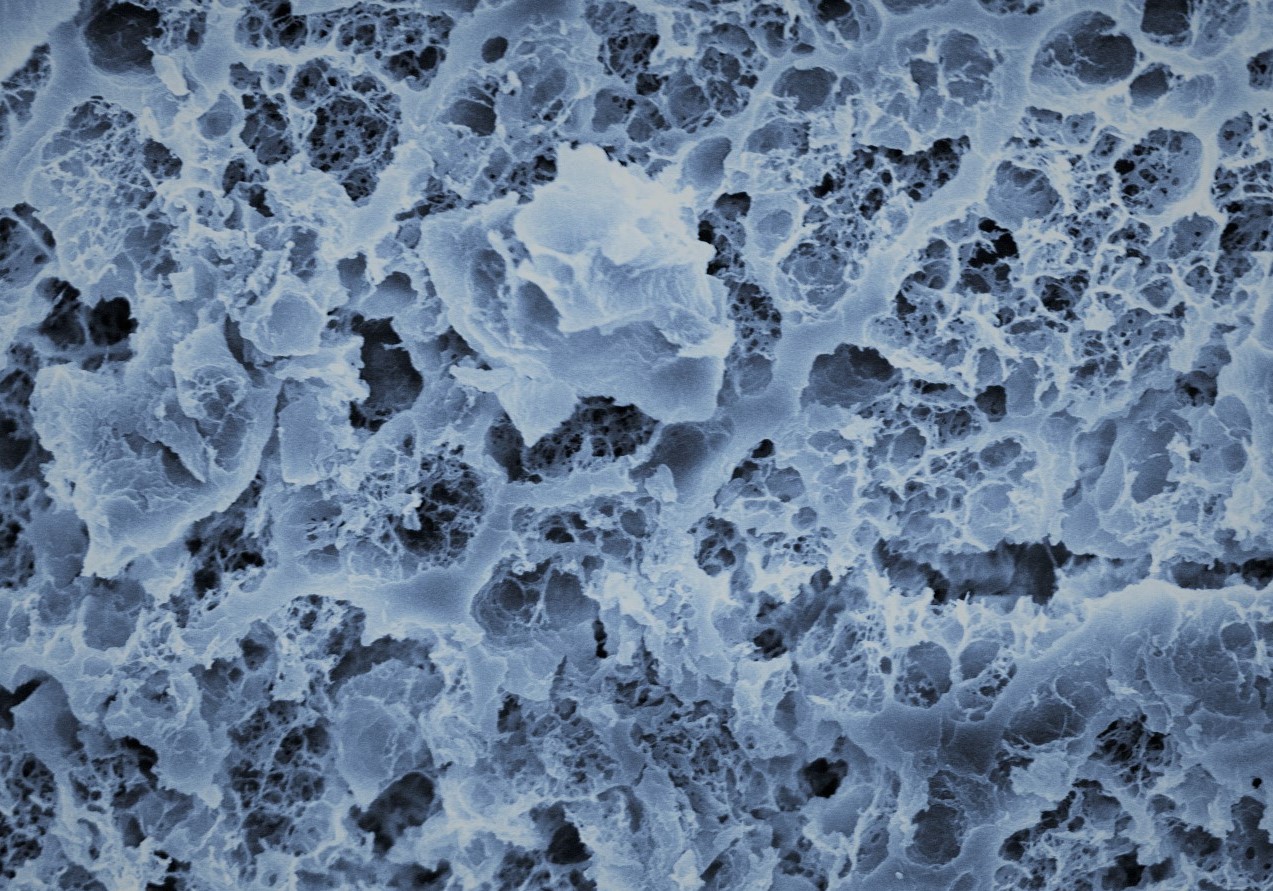

Stimuli-responsive Polymers for Wastewater Treatment
Stimuli-responsive polymers change their structures and physicochemical properties when exposed to various stimuli such as pH, temperature, light, and ionic strength. We developed various temperature-sensitive and CO2-sensitive copolymers and terpolymers with controlled composition. In wastewater treatment, the temperature-sensitive polymers adsorbed onto clays (waste) and then we raised the temperature above the critical temperature to transform the polymers from hydrophilic to hydrophobic resulting in efficient sedimentation of clays in wastewater. Similarly, CO2-sensitive polymers changed from neutral to cationic when exposed to CO2 and accelerated the sedimentation of clays.
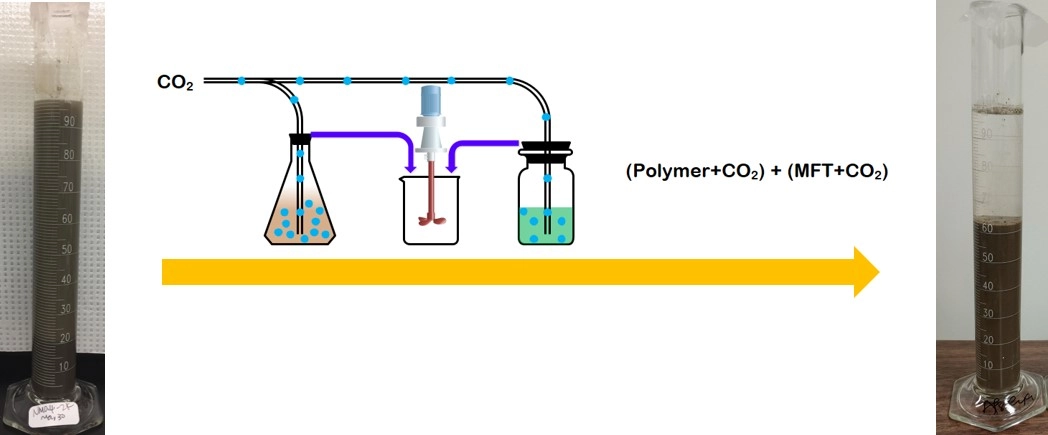
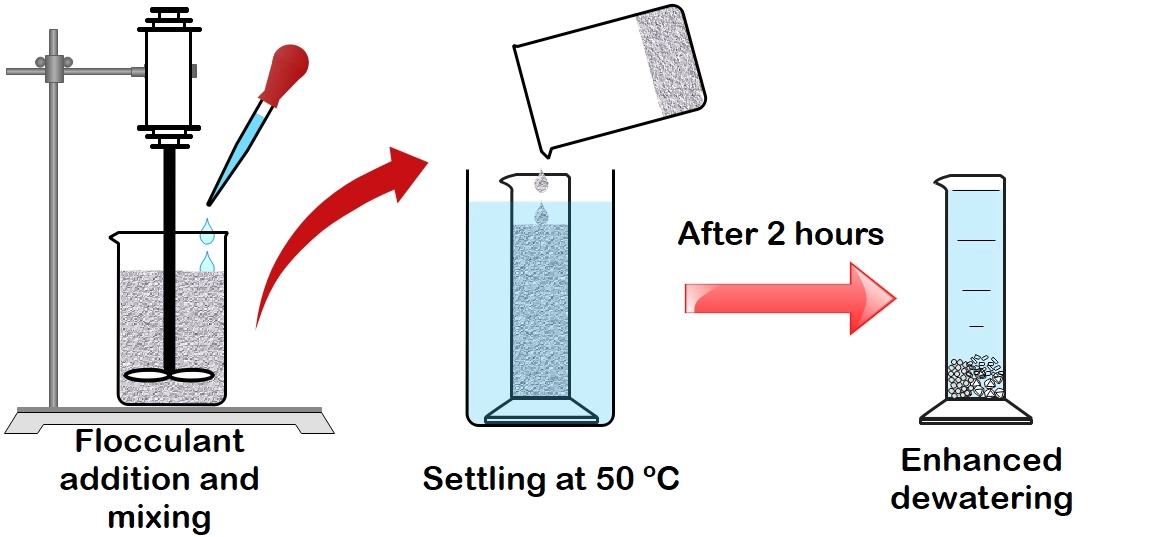
Polymer Reaction Engineering Tools to Design Complex Polymers
Nowadays, various complex polymers are used depending on the requirements of the application. The complex polymers include copolymers and terpolymers with different functionalities such as anionic, cationic, hydrophobic, etc. Composition drift during the polymerization prevents the production of polymers with precise composition. We quantified the compositional drift during the synthesis of terpolymers and used this information to precisely synthesize a series of terpolymers with compositions suited for solid-liquid separation. This work formed a framework to precisely tailor the composition of complex polymers.
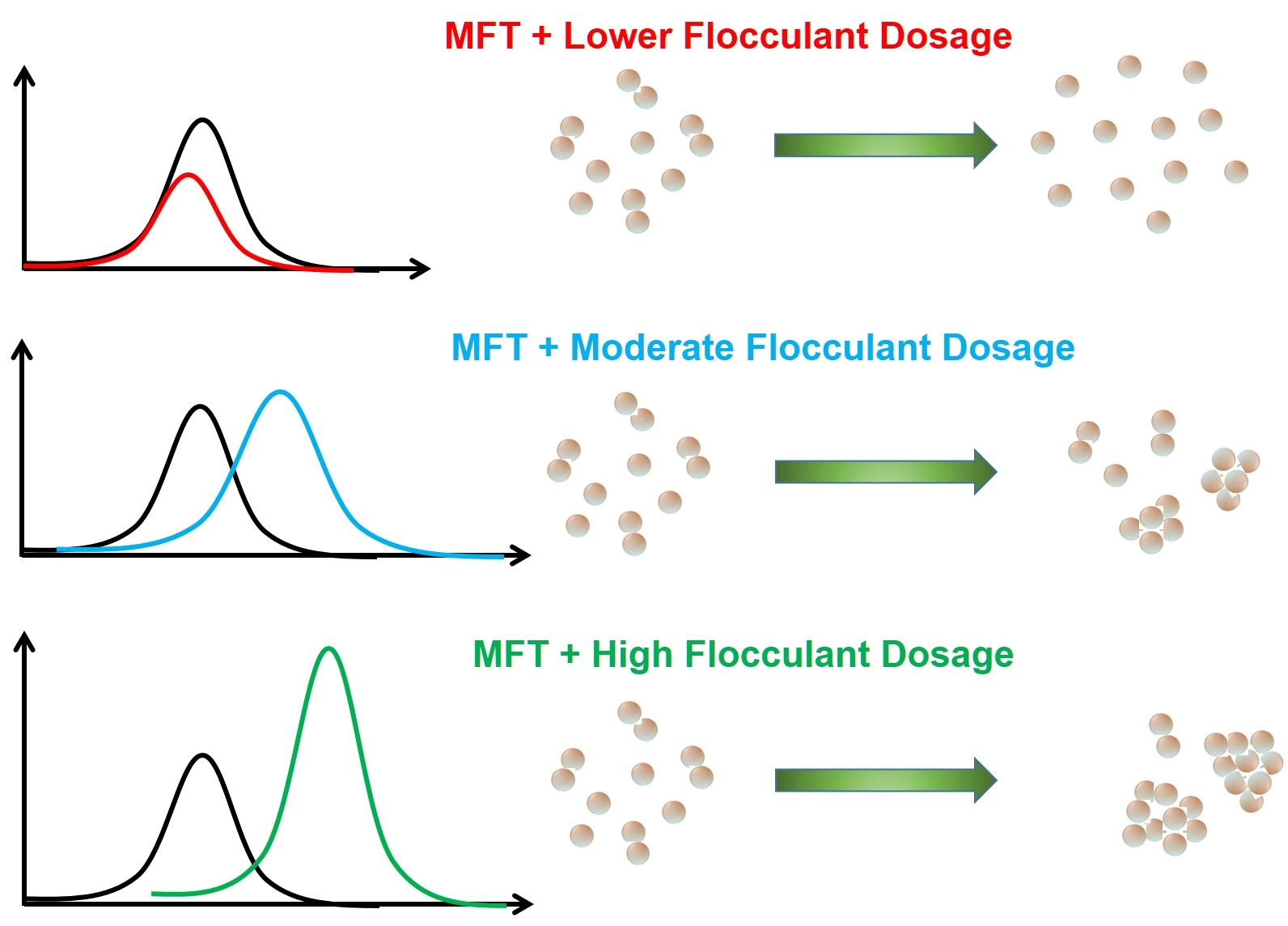

Degradable Polymeric Flocculants
Researchers are interested in degradable polymeric flocculants due to the environmental impact of synthetic polymers and their ability to compact the sediments after flocculation. In this work, we designed a series of hydrolytically-degradable polymers, which satisfactorily flocculated solid particles in water and additionally, compacted the sediments after the degradation of polymers. The degradation of polymer took place within the water when kept for longer times up to 10 days and did not need an external stimulus.
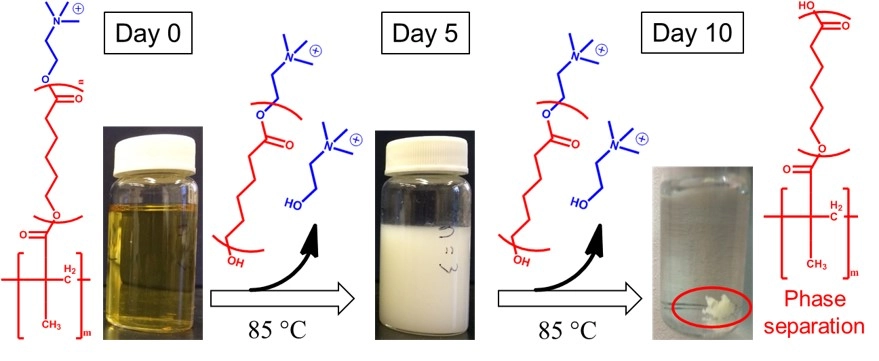
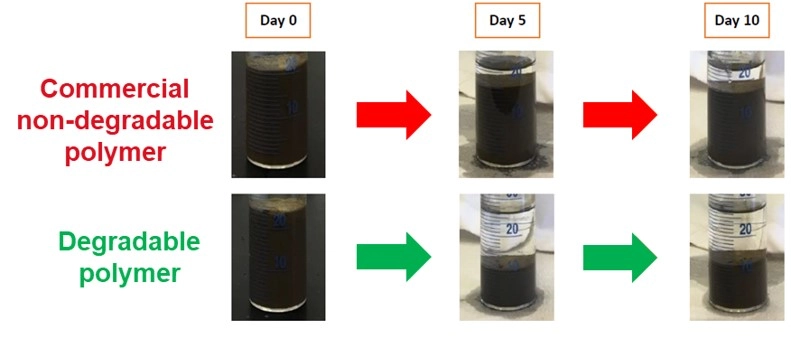
Electrically-conductive Adhesives
Conductive adhesives are the latest generation of electronic packaging materials, which is a medium to distribute the current to various components on the circuit board, to manage the heat produced in the circuit, and to protect the components' mechanical integrity. In this work, we developed conductive adhesives using epoxy and silver micro- and nano-fillers and investigated their in-situ electro-mechanical properties. We also demonstrated the use of polyaniline in the flexible, electrically-conducting coating. The investigation of the percolation threshold of conduction and a correlation between mechanical strain and electrical strain were key fundamental aspects of this work.

Electrocatalyst Nanomaterials for Fuel Cells
Fuel cells convert the chemical energy of fuel and oxidant into electrical energy via hydrogen oxidation and oxygen reduction reactions. Typically, electrodes of a fuel cell consist of Pt nanoparticles supported on carbon black (electrocatalyst), which enhance the reaction rates. However, Pt is a scarce and expensive metal thus, reducing its loading or completely replacing it with an abundant and cheap metal would be advantageous. In this collaboration work, we synthesized Pt, Pd, Pt-Co, Pt-Mo, and Pt-Ni nanoparticles using the process intensification approach of sonochemistry and a continuous flow microreactor. The electrocatalytic activity of the nanoparticles was tested in the proton exchange membrane fuel cell (PEMFC).

